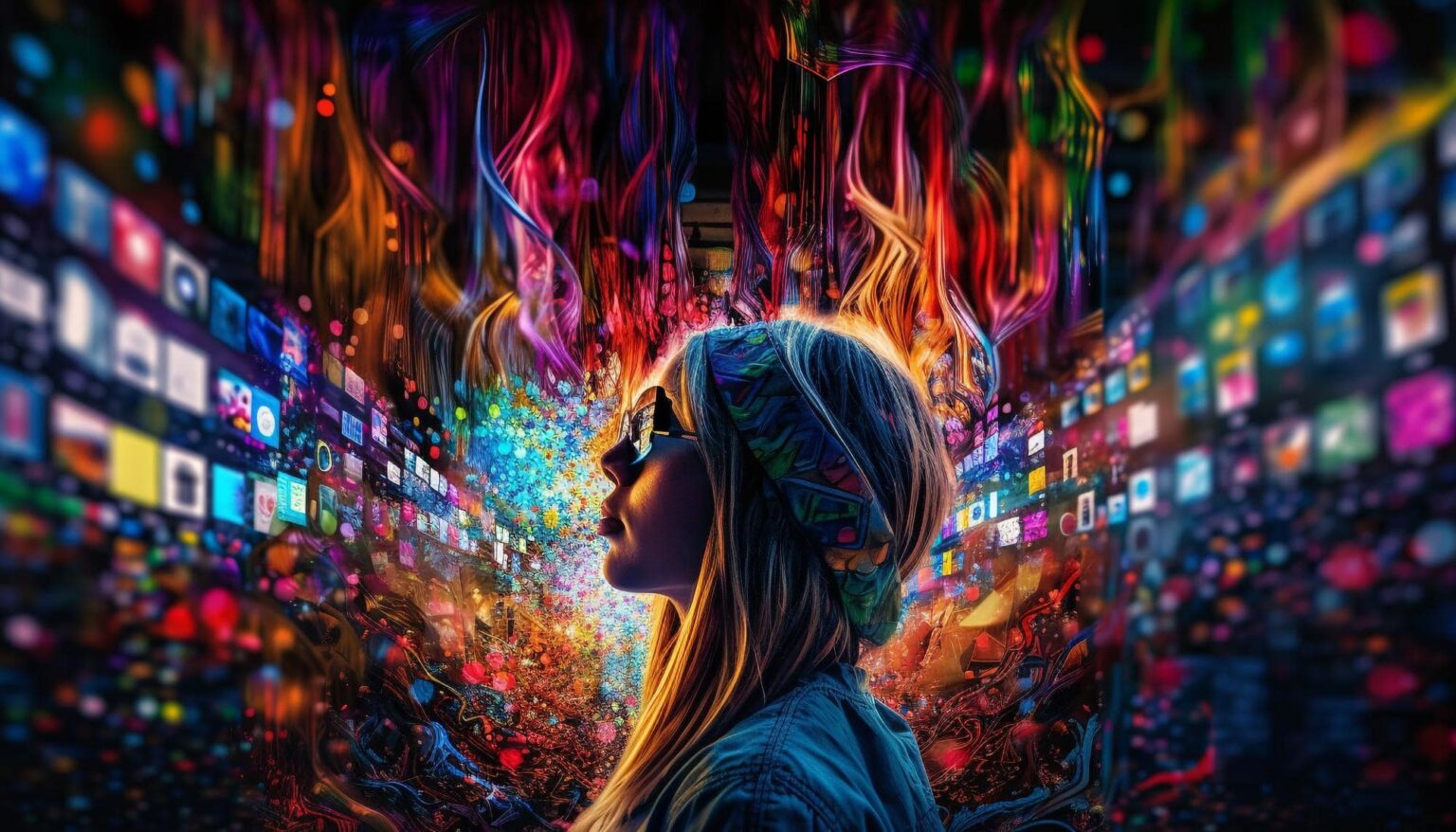Artificial Creativity Unleashed: Exploring AI’s Role in Transforming the Creative Industries, From Music Composition to Visual Arts” delves into the burgeoning intersection of artificial intelligence (AI) and creative expression, showcasing how AI technologies are revolutionizing the creative process across diverse domains such as music composition, visual arts, literature, and design. Here’s an overview of the key themes covered in this exploration:
AI in Music Composition:
- Generative Models: Utilization of AI-driven generative models, such as recurrent neural networks (RNNs) and generative adversarial networks (GANs), to compose original music compositions, melodies, harmonies, and rhythms autonomously or in collaboration with human composers.
- Style Transfer: Application of style transfer techniques to create music in the style of specific composers, genres, or historical periods, enabling exploration of novel musical styles and cross-genre experimentation.
AI in Visual Arts:
- Generative Art: Generation of visual artworks, digital paintings, and abstract designs using AI algorithms capable of learning and replicating artistic styles, techniques, and aesthetics from existing artworks or by exploring latent spaces of creativity.
- Artistic Style Transfer: Transformation of photographs, images, or videos into artistic renderings inspired by famous artists’ styles, movements, and motifs through neural style transfer algorithms trained on large art datasets.
AI in Literature and Writing:
- Text Generation: Automated generation of prose, poetry, narratives, and storytelling using natural language processing (NLP) models, recurrent neural networks (RNNs), and transformer architectures, enabling AI to emulate human writing styles and narrative structures.
- Content Creation: AI-powered content creation tools and platforms that assist writers, journalists, and content creators in generating articles, blog posts, marketing copy, and social media content through automated writing assistance and content suggestion features.
AI in Design and Creativity:
- Automated Design Tools: Development of AI-driven design tools and software applications that aid graphic designers, architects, and creatives in generating layouts, logos, illustrations, and prototypes through automated design suggestions, layout optimization, and creative inspiration features.
- Creative Collaboration: Exploration of AI-powered collaboration platforms and co-creative interfaces that enable human-AI collaboration in creative projects, fostering synergy between human intuition, creativity, and AI-driven assistance.
Ethical and Aesthetic Considerations:
- Originality and Attribution: Addressing ethical concerns related to AI-generated artworks, music compositions, and literary works, including questions of authorship, intellectual property rights, and the authenticity of AI-generated creativity.
- Human-AI Interaction: Exploring the dynamics of human-AI interaction in creative processes, including issues of agency, control, and interpretability, as well as the impact of AI technologies on human creativity, identity, and cultural expression.
Future Directions:
- AI-Augmented Creativity: Envisioning a future where AI technologies augment human creativity, inspire new forms of artistic expression, and democratize access to creative tools and resources, empowering individuals from diverse backgrounds to unleash their creative potential.
- Ethical Guidelines and Best Practices: Establishing ethical guidelines, standards, and best practices for AI-driven creativity to ensure responsible development, deployment, and stewardship of AI technologies in the creative industries, fostering trust, transparency, and inclusivity in the creative process.
Conclusion:
“Artificial Creativity Unleashed: Exploring AI’s Role in Transforming the Creative Industries, From Music Composition to Visual Arts” celebrates the transformative potential of AI-driven creativity in reshaping the landscape of the creative industries, inspiring innovation, experimentation, and collaboration at the intersection of technology and art. By embracing AI as a tool for creative exploration and expression, artists, designers, writers, and creators can unlock new possibilities for artistic discovery, cultural enrichment, and collective imagination in the digital age.



